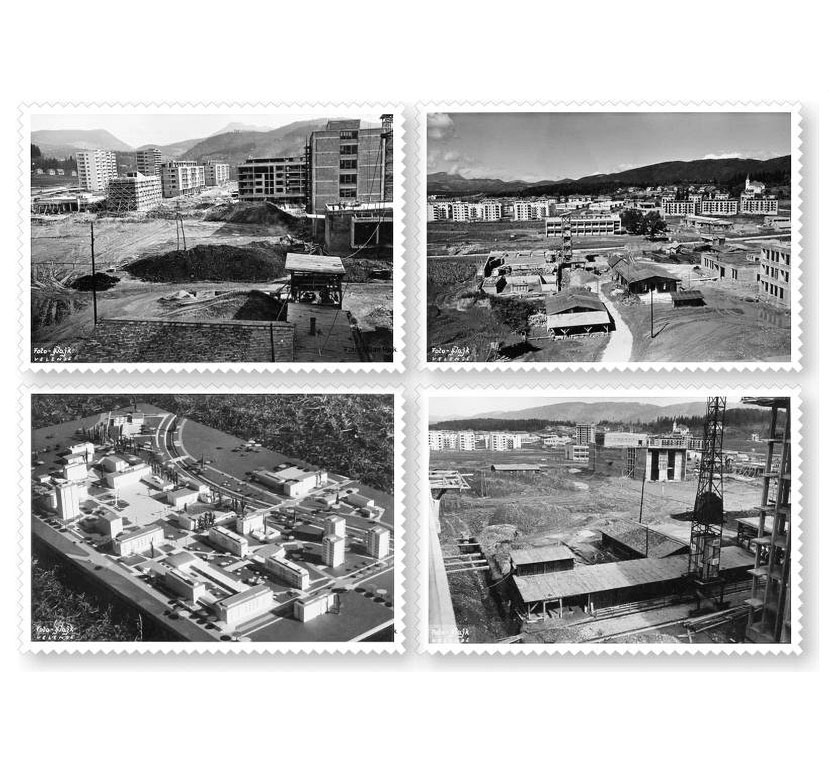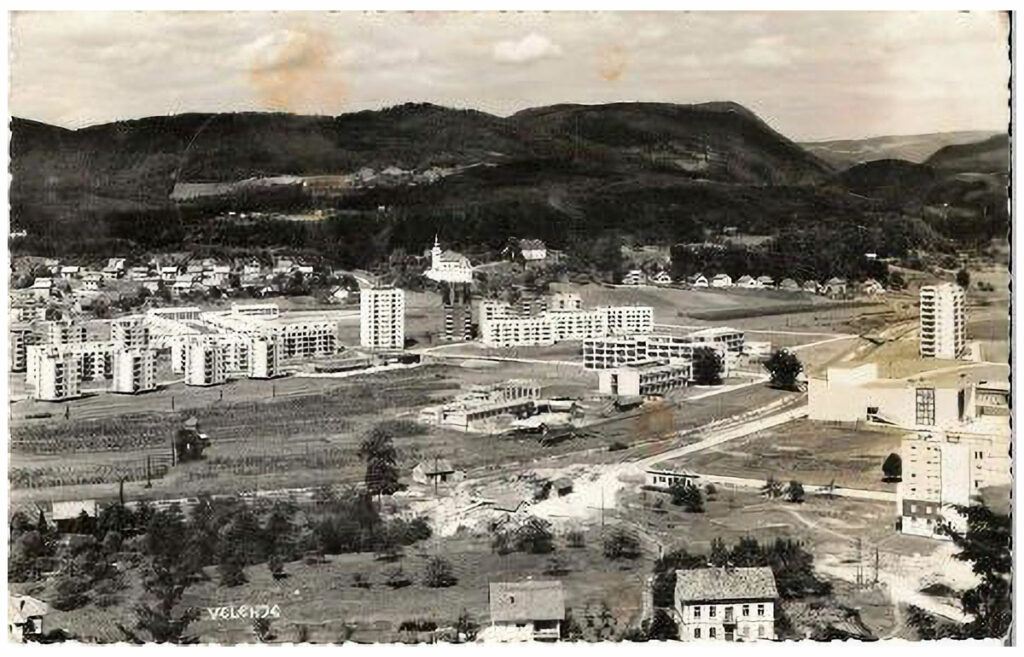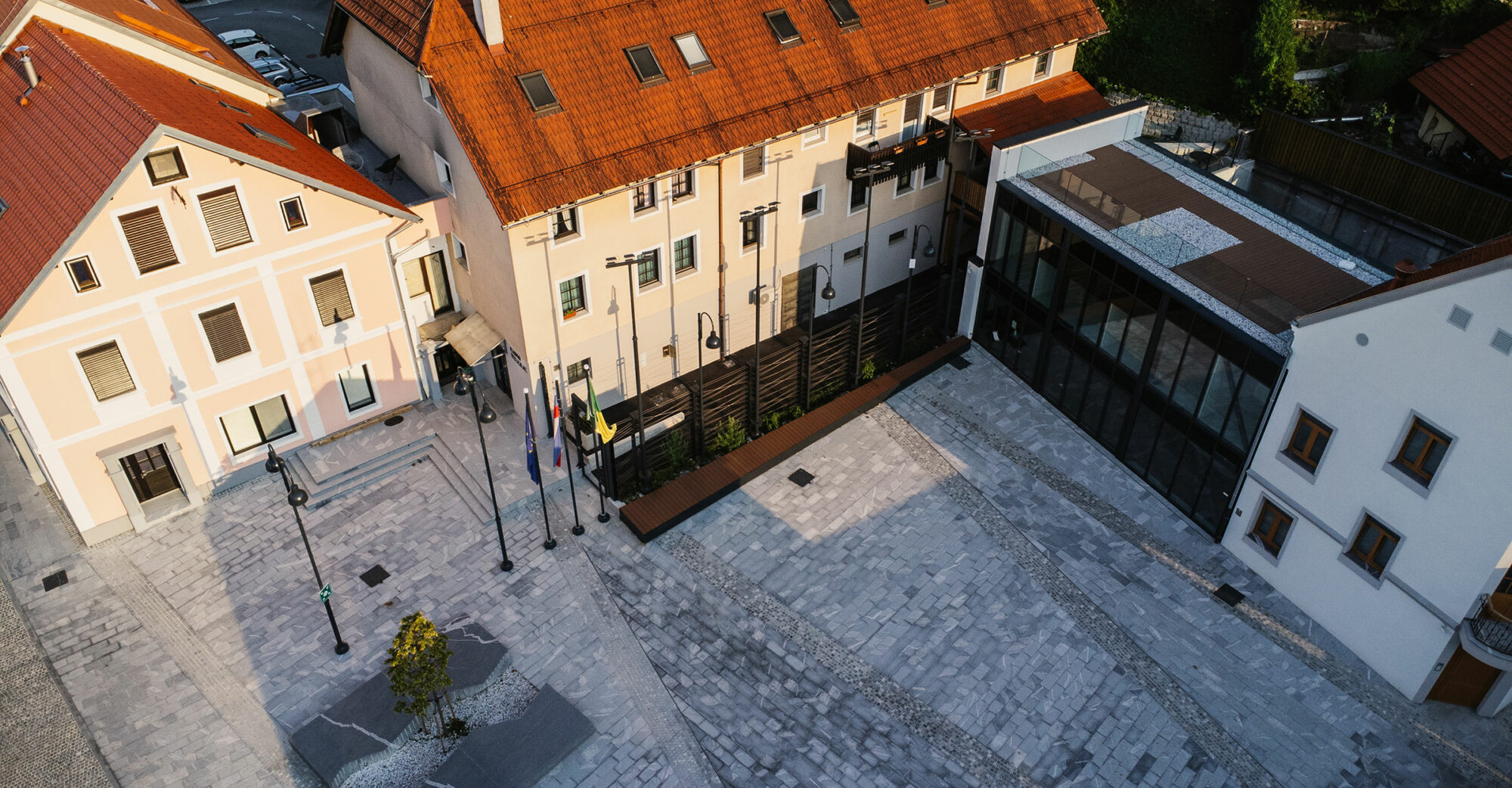
Space
The remains that were found in the Šalek Valley testify that the valley was inhabited as early as in the distant past. In Mornova Zijalka Cave near Šoštanj and the Špehovka Cave near Huda Luknja, the remains of a prehistoric human settlement were excavated, while in Bevče and Plešivec prehistoric objects were unearthed. The remains from the Roman era show that there was a Roman settlement in the area of the Šalek Valley at the time.

The area of today’s Velenje was first mentioned in 1250, Velenje square was first mentioned in documents in 1264, while for centuries the old town square has been dominated by the castle which was first mentioned in historical sources in 1270.
In the 16th century, the Šalek Valley became one of the centres of Protestant life in Styria. The greatest achievement of this time was the school founded by the Protestants in Velenje. Owing to the large number of castles (over 20), the Šalek Valley was also known as the “valley of castles” in the Middle Ages, with the name being preserved to this day.
In 1801, a big fire broke out in Velenje which reduced the entire square to ashes, including St Mary’s Church. At the time, Velenje was nothing but a small square that lagged behind Šoštanj in terms of size. In 1889, it had only 364 inhabitants. Velenje did not experience any significant upswing in economic activity until the end of the 19th and the beginning of the 20th century, when a coal mine was opened nearby. The coal mining only had an indirect impact on the development of the square, as Velenje was not a mining settlement at the time.
At the end of the 19th century, mainly trade, sawmills and wood processing plants were developed in Velenje, with agriculture remaining an important economic sector throughout.
In 1931, more than half of the Šalek Valley’s population still lived from this activity. Velenje coal and the Šoštanj leather factory are two of the reasons why in 1891 this area got a railway which ran through the Savinja Valley connecting Velenje to Celje. In 1899, the railway connection between Velenje and the Koroška Region (Dravograd) was also established.
History of the city
Especially after 1950, when the demand for coal increased significantly, the need to build a modern town, which was to replace the initially planned small terraced houses for the many miners from all over Yugoslavia, became ever more apparent. It was under the leadership of the director of the Coal Mine of the time, Nestl Žganek, and with the cooperation of design engineers of the largest architecture and civil engineering bureau of the time (Slovenija projekt) from Ljubljana, run by architect Janez Trenz, that the plans for a modern city, providing housing for approximately 30,000 inhabitants, commenced.
Based on Žganek’s motto that “…miners who spend half a day in the dark bowels of the earth should have as bright and sunny apartments as possible…”, the plans of the design engineers transformed Velenje into a contemporary modern city with free-standing buildings placed amidst large green areas. Unfortunately, subsequent city planners failed to adequately continue this concept for many reasons, but nevertheless managed to preserve the expression of late modernism in the inner city centre which is rare in Europe. The incredible growth of the town, when at the end of the 1960s more than 20 city buildings sprang up in the middle of the green surroundings in just two years, astonished the entire home country at the time. On 20 September 1959, the new city centre of Velenje was officially opened. This is also the day when the Municipality of Velenje celebrates its birthday.
Today, the city has reached the limits of its planned development. This anniversary is an opportunity to look back with pride on the journey we have made. To be proud of our parents who managed to transform a few modest settlements scattered across the eastern part of the Šalek Valley into what is now the eighth largest city in Slovenia. They achieved this by being zealous, by making sacrifices and by exploiting the political circumstances of the time.
1972–2020 historic aerial photos
In 2019, we obtained aerial photographs of the municipality’s terrain from the Land Surveying Institute of Slovenia. The photographs were taken in cycles by the Surveying and Mapping Authority of the Republic of Slovenia since 1972. The Office for Spatial Planning within the Municipality of Velenje edited the photos (they equalised luminance, merged the photos and geolocated them…).
The currently obtained images mainly cover the territory of the coal excavation area, i.e., the Šalek Lakes and (the majority of) the city of Velenje. However, for individual years they also cover the area of today’s municipalities of Šoštanj, Šmartno ob Paki and Polzela. You can view historical greyscale images of parts of the municipality for years 1972, 1975, 1979, 1987, 1990, 1993, 1996 and 1999. Colour images of the entire municipality from the year 2000 to the present day are available through the PISO system in 3-year intervals. You can access it by clicking the link below.

The images can be viewed under different enlargements in the online GIS PISO application at: HISTORICAL AERIAL PHOTOGRAPHS OF LAKES AND CITIES.
Individual volumes are accessible by clicking on the “Choose SUBJECT” menu (top left). ![]()
Literature on the construction of our town:
- Spomini “Rdečega kralja”, Damjan Kljajič, Vlado Vrbič, založba Karantanija, 2001 (Biografija Nestla Žganka)
- Velenje, različni avtorji, založba MOV, 1999 (Zbornik razprav)
- Monografija Velenja 1976, različni avtorji, 1976
- Monografija Velenja 2002, različni avtorji, založba MOV, 2002
- Velenje, bogastvo pogledov, S. Jeršič, M. Ževart, M. Marinšek, 2019


